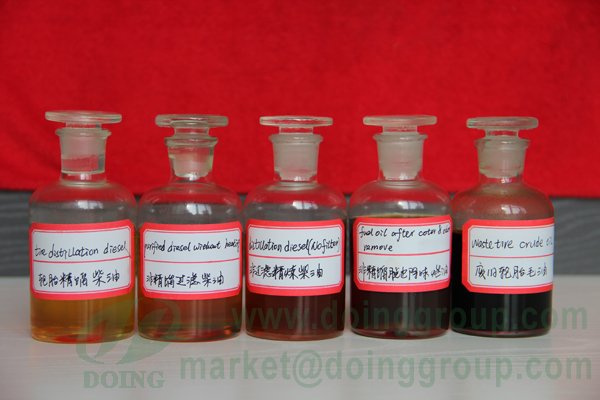Differences between diesel fuel,gasoline and kerosene
Industry News / Chat online / Give me a price / February 11, 2015
Doing Group is specializes in manufacturing waste pyrolysis machine. The waste pyrolysis machine can extract fuel oil from waste tyres, scrap plastic and rubber which this machine can do well in solving the "Black Contamination" and "White Pollution" with waste tires pyrolysis/recycling machine and getting available things, such as crude oil, carbon black, steel wire, etc. Now let us see the differences between disesel fule, gasoline, kerosene.

Pyrolysis oil
The first four chainsCH4(methane),C2H6(ethane),C3H8(propane)andC4H10(butane)are all gases, and they boil at -107, -67, -43 and -18℃,respectively.The chains in the C5,C6 and C7 range are all very light, easily vaporized, clear liquids called naphthas. They are used as solvents dry cleaning fluids can be made from these liquids, as well as paint solvents and other quick-drying products.
The chains from C7 through C11 are blended together and used for gasoline. All of them vaporize at temperature below the below the boiling point of water. That’s why if you spill gasoline on the ground it evaporates very quickly.
Next is kerosene, in the C12 to C15 range, followed by diesel fuel and heavier fuel oils(like heating oil for houses).Next come the lubricating oils. These oils no longer vaporize in any way at normal temperatures. For example ,engine oil can run all day at 120℃ without vaporizing at all.
Chains above the C20 range form solids, starting with paraffin wax, then tar and finally asphaltic bitumen, which used to make asphalt roads.



